Garmin Forerunner 165 review: the perfect fit for beginner runners
Get ahead in your running journey with Garmin's affordable Forerunner 165

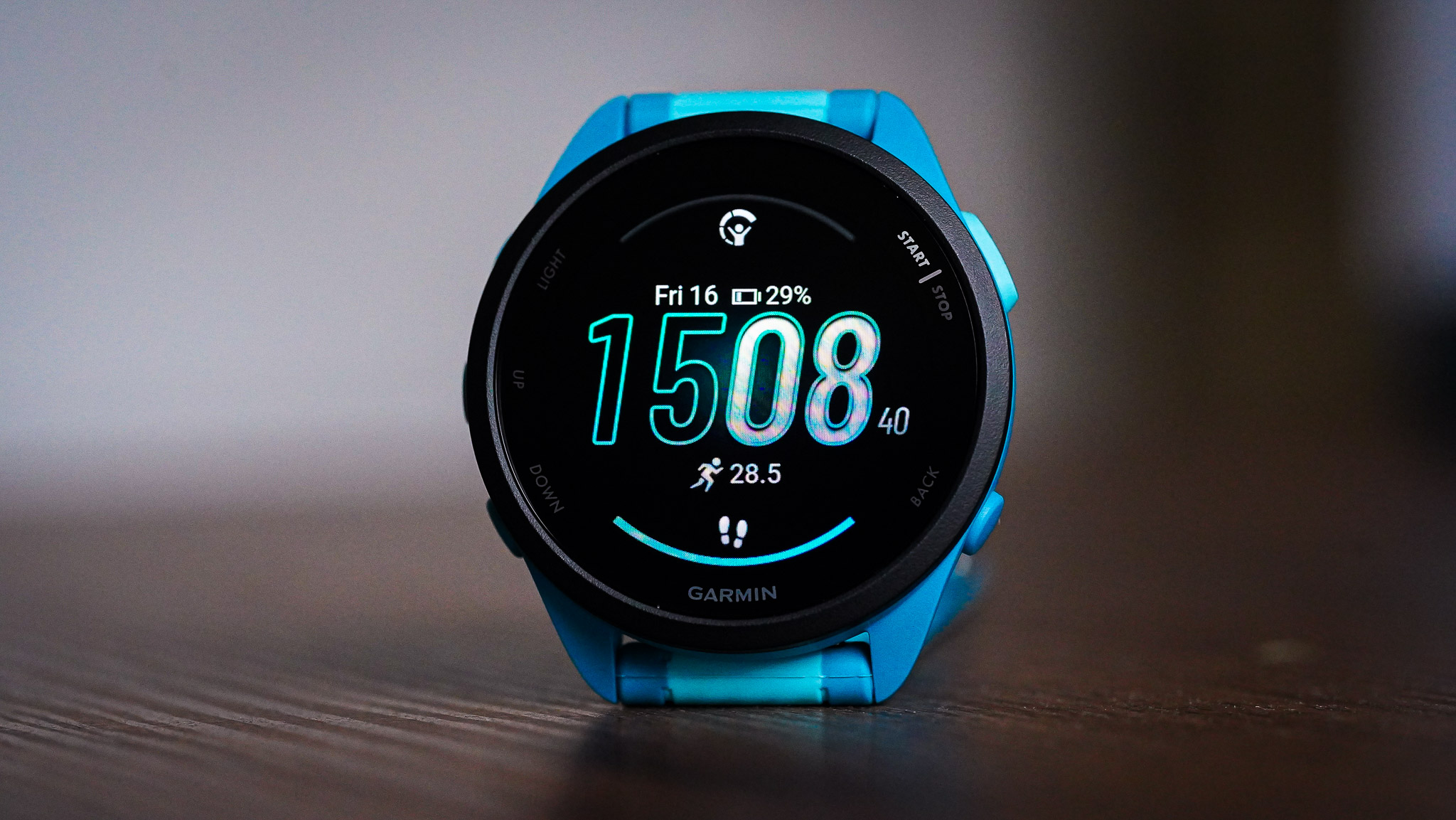
The Garmin Forerunner 165 fills a gap between beginner running watches and entry-level multisport watches, offering an AMOLED touchscreen display, single-band GPS, and various training features for runners. Despite lacking some advanced functionality, its lightweight design, accurate tracking capability, and affordability make it a top choice for dedicated running training, challenging competitors in its category.
-
+
Brilliant AMOLED touchscreen
-
+
Affordable price point
-
+
Uses the latest Elevate sensing platform
-
+
Wrist-based running power and dynamics
-
-
Only single-band GPS
-
-
Misses out on some of the performance features
Why you can trust T3

Garmin did it again! With the launch of the Garmin Forerunner 165, the wearable giant yet again plugged a gap we didn't know existed, somewhere between beginner running watches and entry-level multisport watches. Whether we needed the Forerunner 165 or not, I'm glad it exists, as it's a superb little wearable for running training.
Positioned between the Garmin Forerunner 55 and the Garmin Forerunner 265, the Forerunner 165 is squarely aimed at runners and comes with an AMOLED touchscreen, single-band GPS, and a slew of training features. It's not quite as competent as the Forerunner 265, which shouldn't come as a surprise, considering the mega-affordable price point.
One of the best running watches in the last 12 months, the Garmin Forerunner 165 is set to shake up the market – at least, I hope so. With most manufacturers pushing to upgrade their entry-level wearables to triathlon watches, it's nice to see there is still life left in dedicated running watches.
So you need the Garmin Forerunner 165 in your life? Let's find out!
(First reviewed February 2024)
Garmin Forerunner 165 review
Price and availability
The Garmin Forerunner 165 Series was released on 21 February 2024 and is available now at Garmin US, Garmin UK and Garmin AU. It comes in two versions, Standard and Music, and retails for $249/ £245/ AU$ 429 and $299/ £290/ AU$ 459, respectively.
Specifications
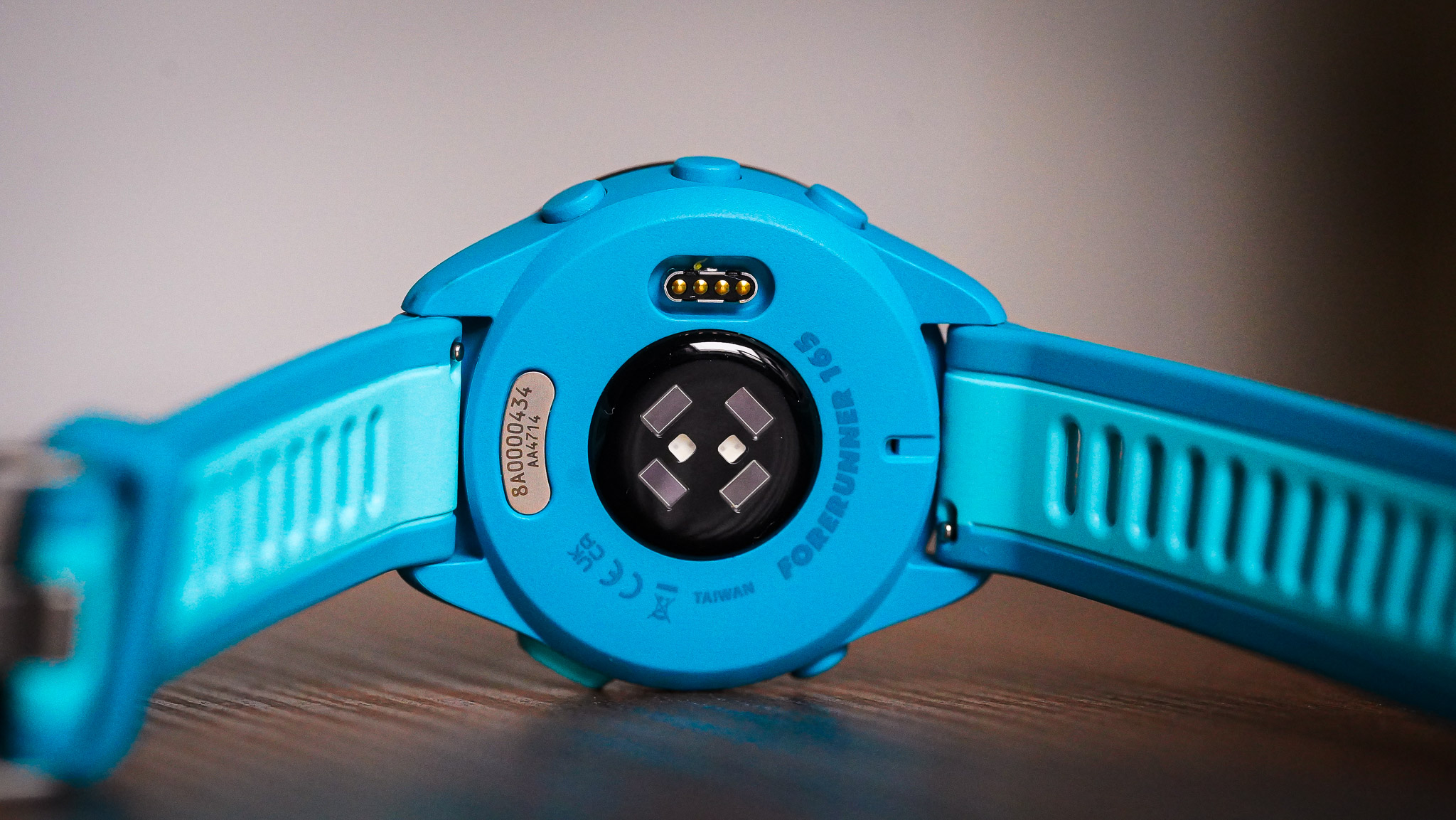
Here, I focused on features that differ slightly in the different models. More details about the Garmin Forerunner 165, including screen resolution and materials, can be found further down.
Get all the latest news, reviews, deals and buying guides on gorgeous tech, home and active products from the T3 experts
| Header Cell - Column 0 | Garmin Forerunner 55 | Garmin Forerunner 165 | Garmin Forerunner 265 |
|---|---|---|---|
| Display type | Transreflective MIP | AMOLED | AMOLED |
| Touchscreen | No | Yes | Yes |
| Lens material | Chemically strengthened glass | Chemically strengthened glass | Corning Goriall Glass 3 |
| Battery life (smartwatch mode) | up to 14 days | up to 11 days | up to 13 days |
| Battery life (GPS mode) | up to 20 hours | up to 19 hours | up to 20 hours |
| Memory | 200 hours of data | 4 GB | 8 GB |
| Multiband GPS | No | No | Yes |
| Wifi connectivity | No | Yes (Music model only) | Yes |
| Barometric altimeter | No | Yes | Yes |
| Garmin Pay | No | Yes | Yes |
| Training readiness | No | No | Yes |
| Acute load | No | No | Yes |
| Morning report | No | Yes | Yes |
| Wrist-based running power | No | Yes | Yes |
| Wrist-based running dynamics | No | Yes | Yes |
| Training status | No | No | Yes |
| Race Adaptive Training Plans | No | Yes | Yes |
| Triathlon activity profile | No | No | Yes |
| Power meter compatible | No | No | Tes |
| Row 19 - Cell 0 | Row 19 - Cell 1 | Row 19 - Cell 2 | Row 19 - Cell 3 |
Design and build quality
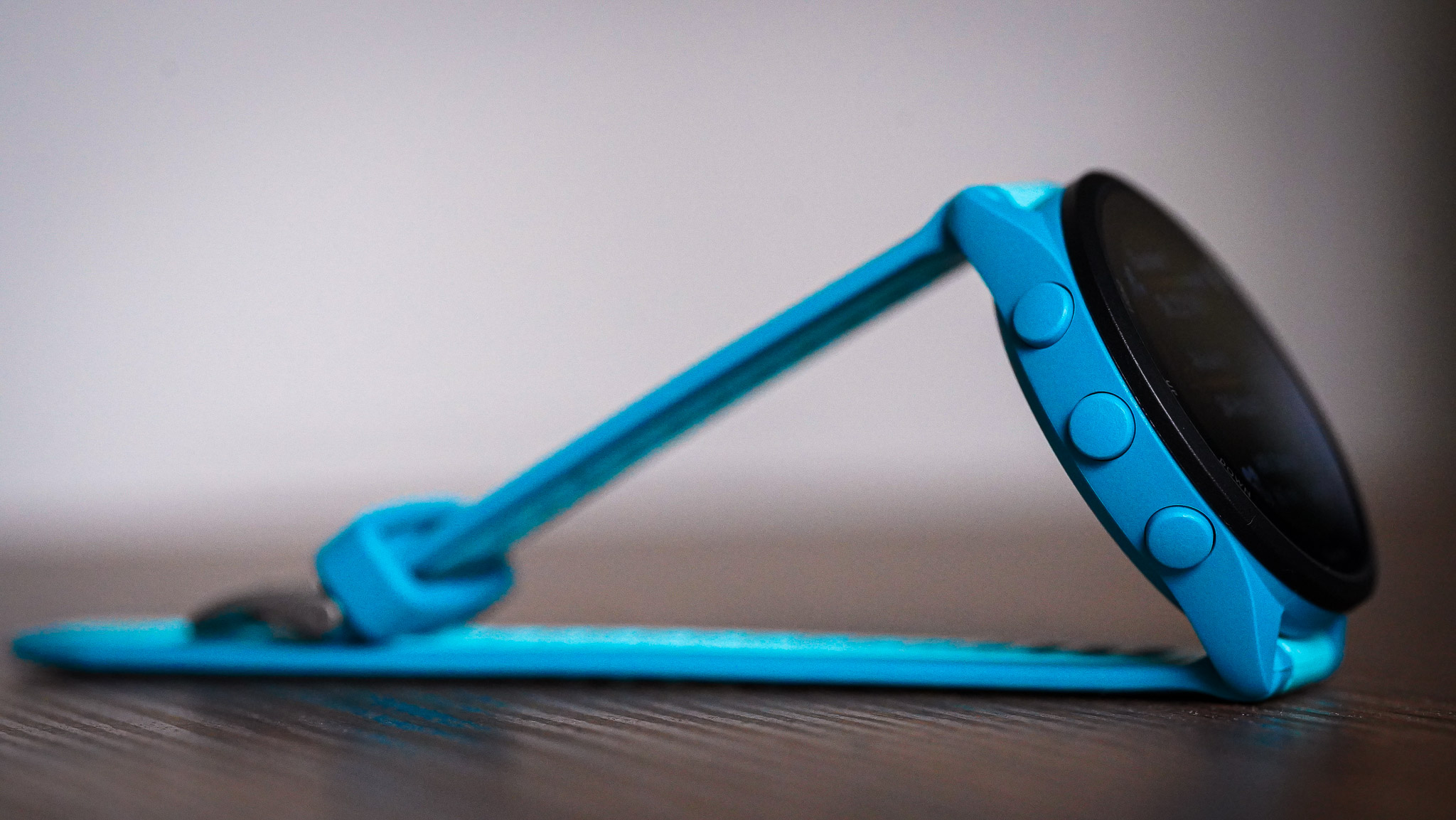
From a physical design point of view, the Forerunner 165 is a Garmin through and through. Well, minus the AMOLED display, which only recently started appearing on Gamrin's wearables.
Said AMOLED is a 1.2" touch-sensitive screen with a resolution of 390 x 390 pixels; it's protected by chemically strengthened glass and embedded into a reinforced polymer case.
I haven't been provided info on the bezel material yet, but it feels very similar to the case, so I'll go out on a limb and say it's also made of reinforced polymer.
The display is pretty is readable in broad daylight. Touchscreen interactions are smooth, which makes operating less hassle.
The five-button physical layout is still here, so if you're not comfortable using the touchscreen to operate the watch, rest assured you can control everything using buttons only.
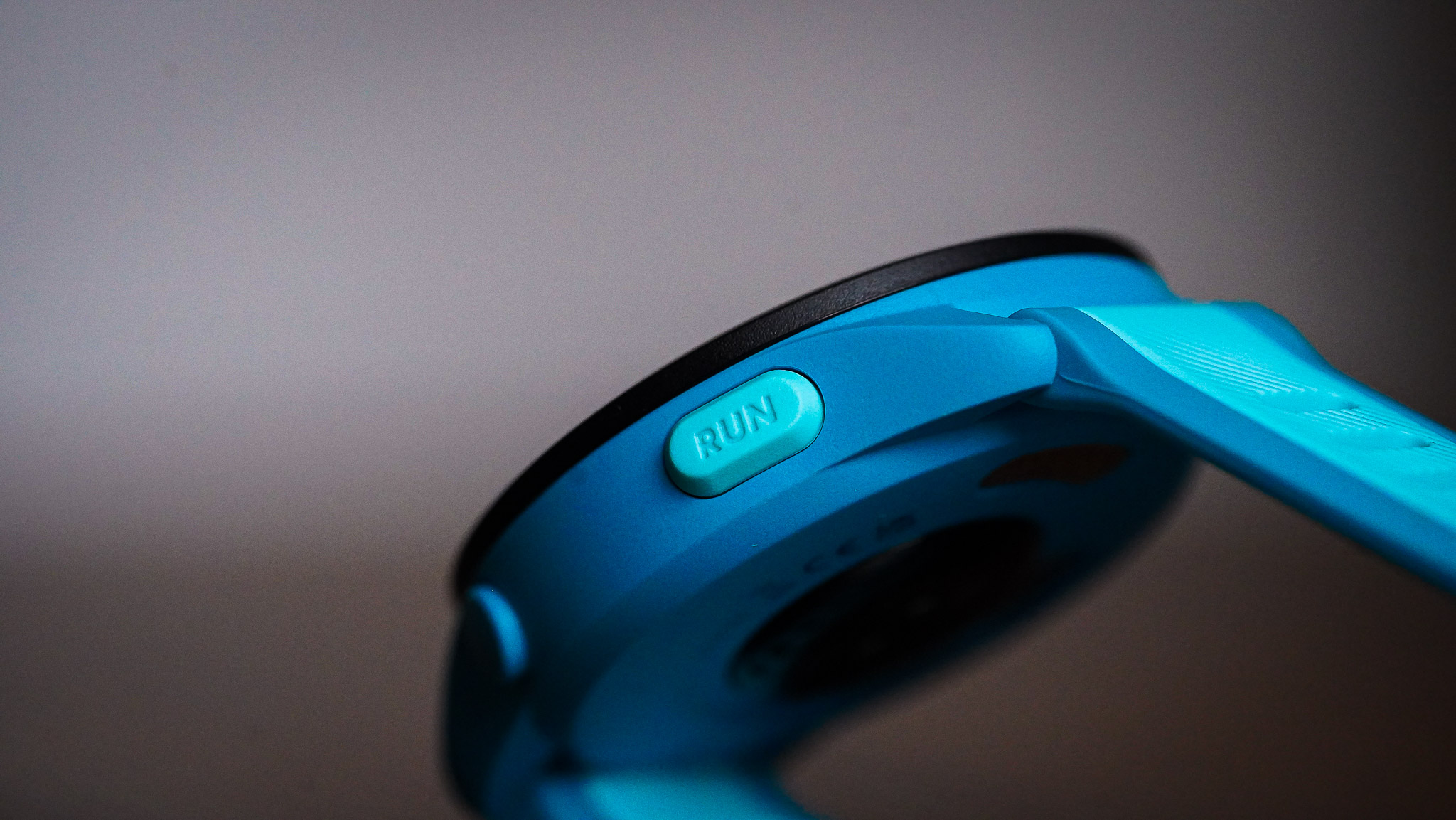
The buttons are plain, unlike the Garmin Forerunner 965, which has lovely debossed buttons (and costs waaaaaay more than the Forerunner 165). That said, one of the buttons, the action button, has a different colour with the word 'RUN' written on it.
The Garmin Forerunner 165 weighs 24 grams without the strap and 40 grams with the silicone strap provided. This makes the watch one of the lightest running watches on the market.
For comparison, the Coros Pace 3 weighs 26 grams on its own and 39 grams with the silicone band.
The wearable features the latest Elevate Gen 5 sensing platform, introduced in the Garmin Fenix 7 Pro. It's a pretty big deal, as this is the same in most top-tier Garmin watches, and it provides the most accurate readings to date.
Features
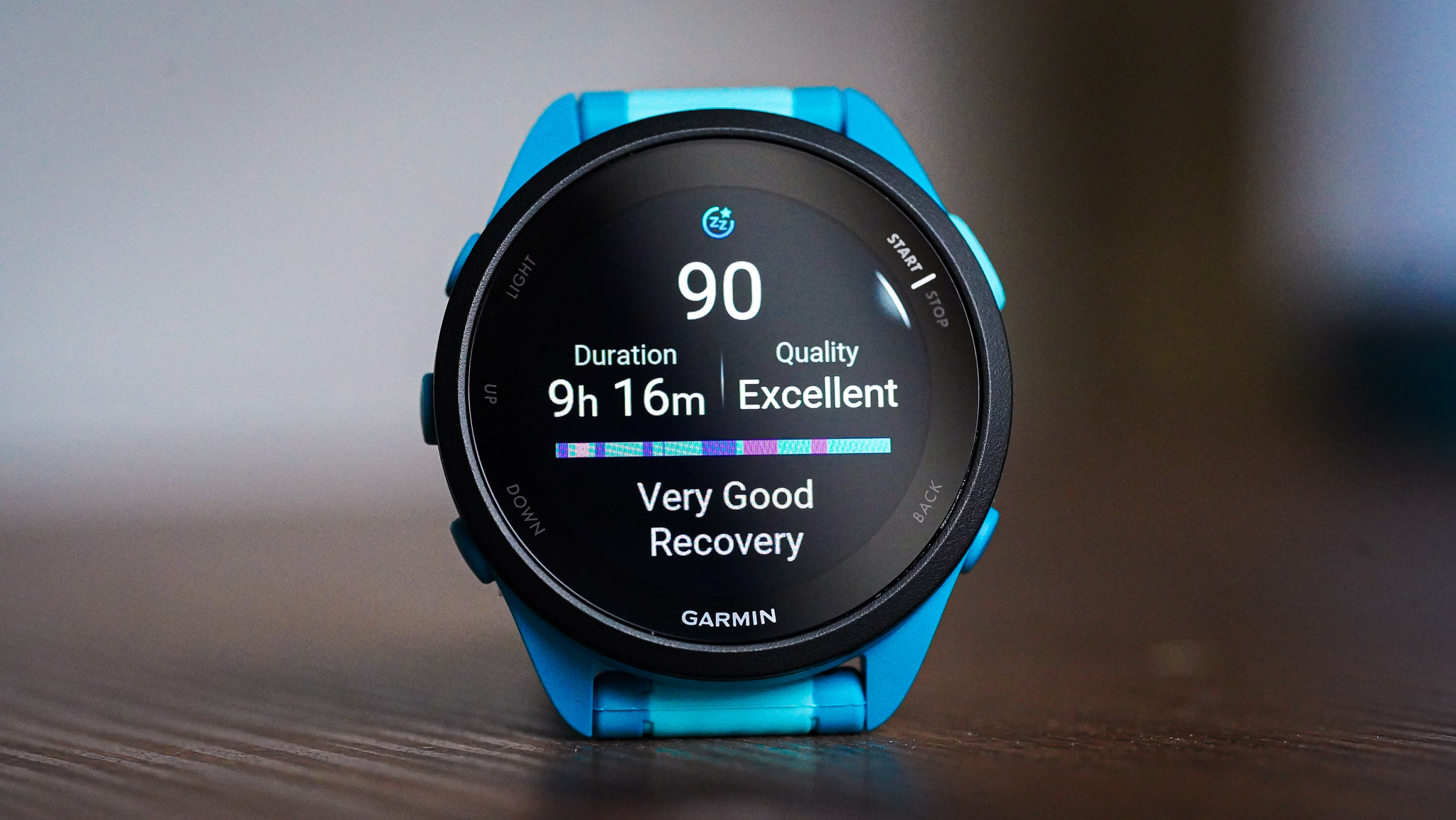
The feature set of the Garmin Forerunner 165 can be summarised in one sentence: you win some, you lose some.
As expected from a Garmin wearable, the Forerunner 165 has a ton of health and fitness features, including sleep and stress tracking, all-day heart-rate monitoring, blood oxygen, step tracking, nap detection, and more.
It also has a few running-specific and other features, such as wrist-based running power and dynamics, Training Effect, heart rate variability, race adaptive training plans, etc.
You also get the morning report (loving it, still), nap detection, offline music storage (Spotify, Deezer or Amazon Music; Music models only), audio prompts (Music models only) and Garmin Pay.
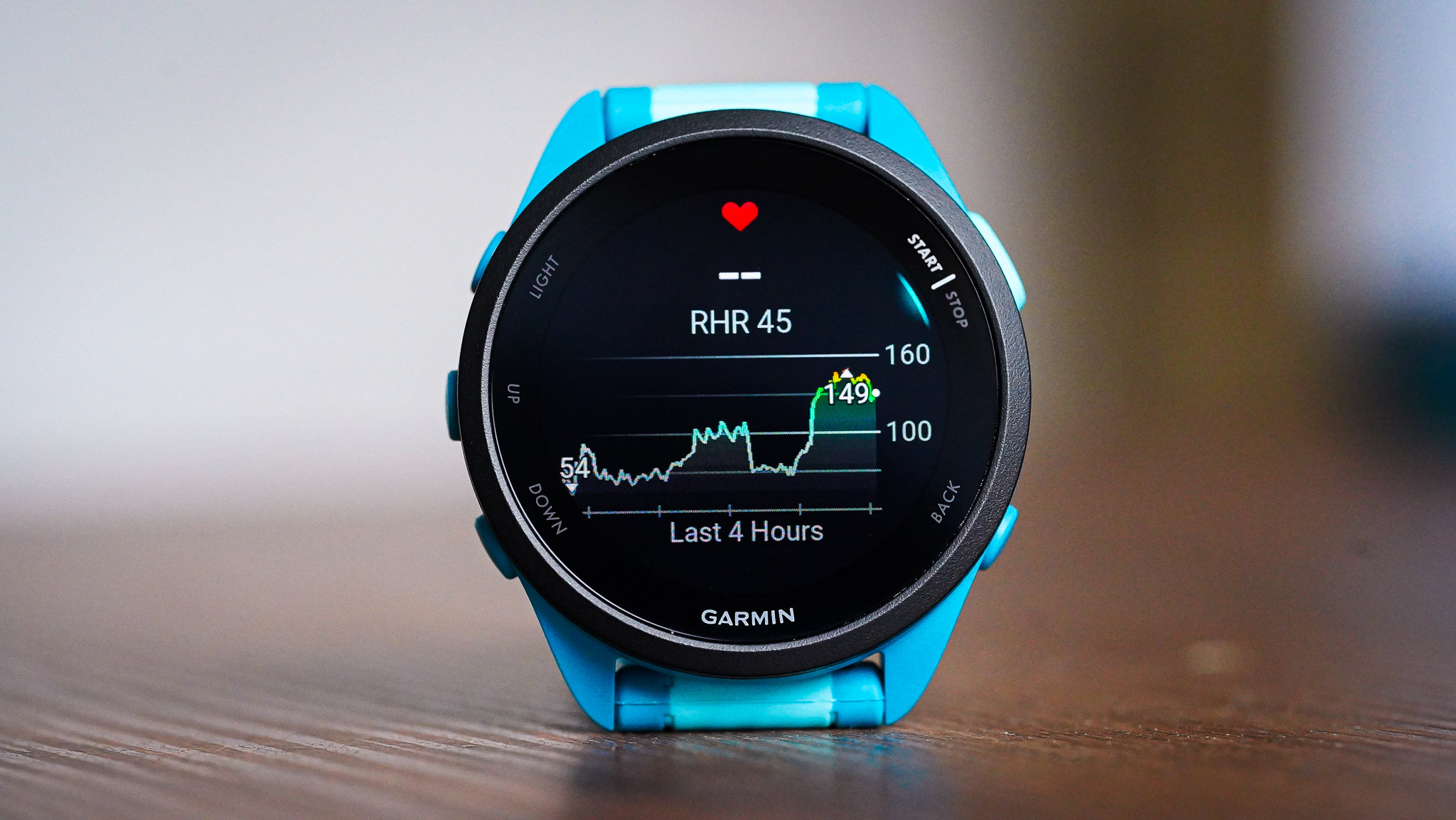
Some features the Garmin Forerunner 165 misses out on are Training readiness, Acute load/Load Focus, Training status, and the Triathlon activity profile. The watch tracks swimming, cycling and running modes separately, but if you need a Garmin wearable to track them as one workout, you need something like the Forerunner 265.
Considering that the watch has sensors that would enable it to provide those features, it feels like a conscious effort from Garmin not to include these on the Forerunner 165.
It's all for the best, to be honest, as I know many people find the insane number of features on Garmin watches overwhelming. Less is often more, so by blocking some of the features, the brand effectively makes the watch more accessible.
What's left on the Forerunner 165 is more than enough for the average runner to track and manage their training and recovery.
Tracking performance
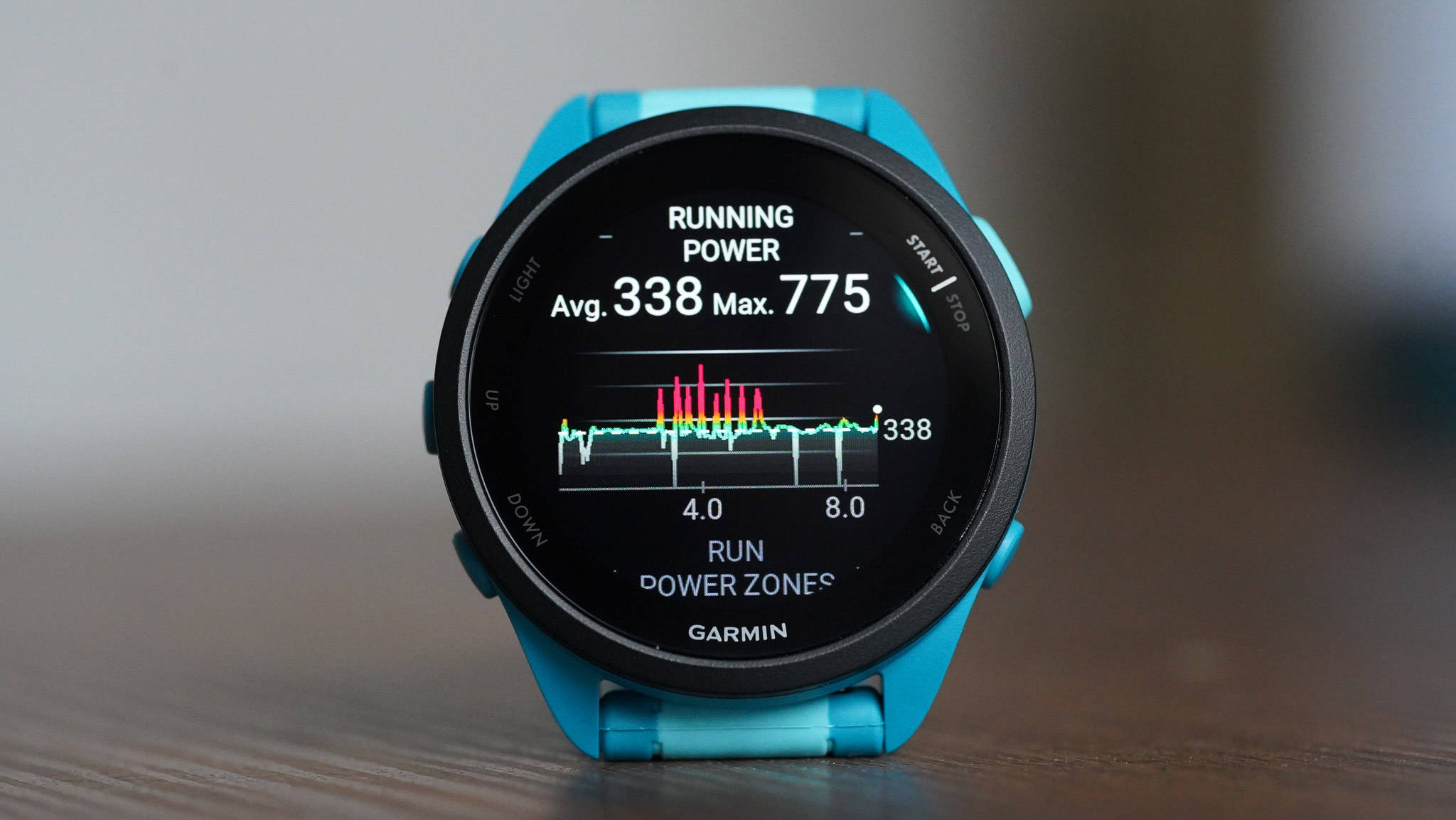
[PLEASE NOTE: Although Garmin very kindly provided me with a pre-launch sample of the watch, I couldn't connect the watch to the Connect app, as you need special access to that. The data I could use was found on the watch itself.]
One thing I haven't mentioned yet is GPS. Well, it was mentioned briefly among all the specs, but now is the time to discuss it at length. GPS is one of the areas where the Forerunner 165 is closer to the Forerunner 55 than the Forerunner 265.
The Forerunner 165 uses a single-band GPS, which means it might not perform as well in challenging environments with tall buildings or under a thick canopy of leaves.
I live by the sea without any mountains in the vicinity, so I had no issues with the GPS. The watch occasionally picked up the signal slower than the Forerunner 965, but once it locked on, accuracy seemed on point.
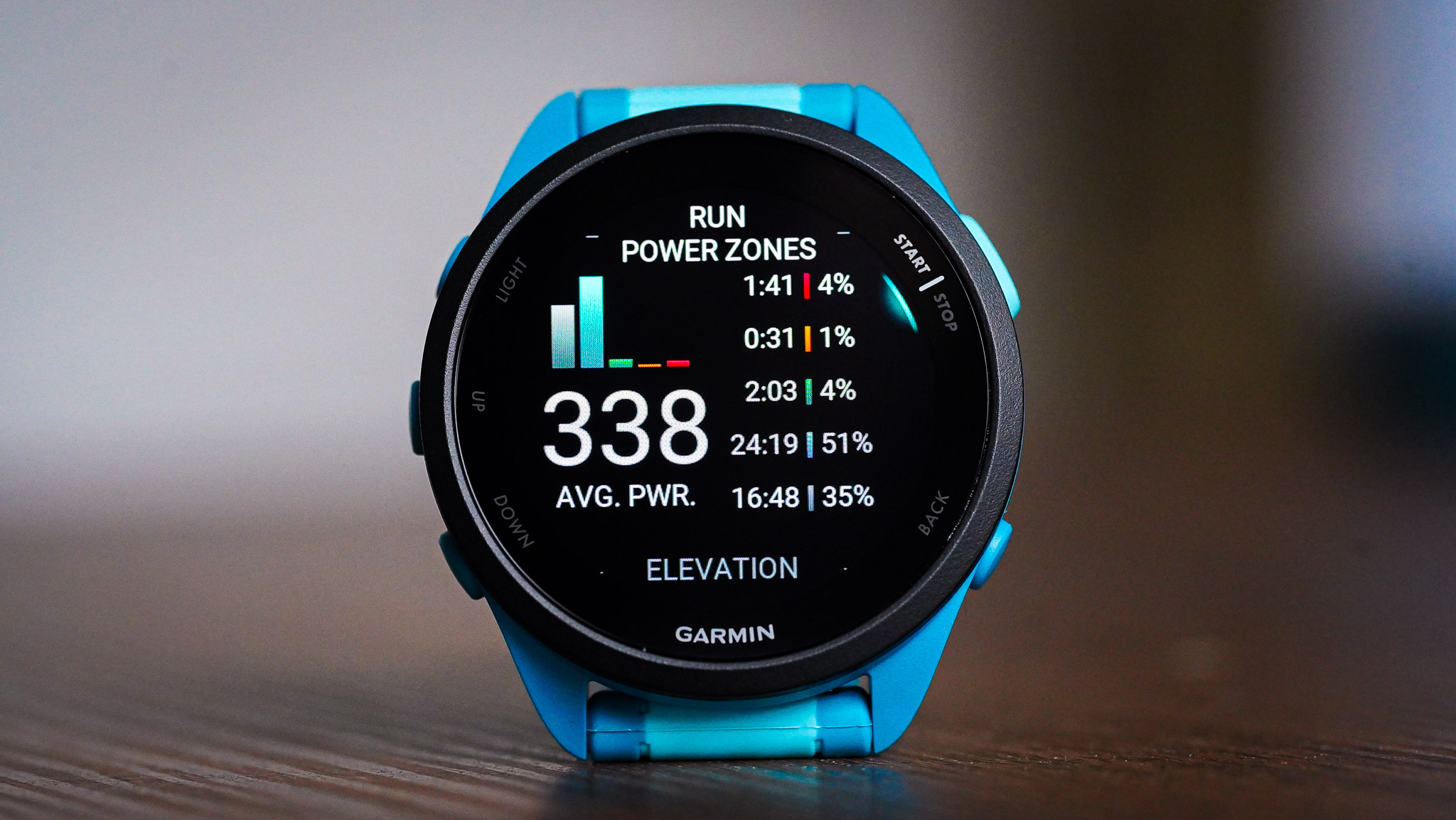
Running dynamics provided by the Forerunner 165 were almost identical to the Forerunner 965; the only difference was running power, which seemed higher on the latter wearable.
Graphs, again, looked very similar on both watches, including heart rate, elevation and so on.
I guess this all makes sense, considering both watches use the same sensing platform and algorithm to calculate more of these stats.
Sleep tracking is as good as it gets from a wrist wearable. I also wore the Ultrahuman Ring Air and the Oura Gen 3 to bed, and the sleep stages breakdown on the Forerunner 165 and the Oura looked very similar.
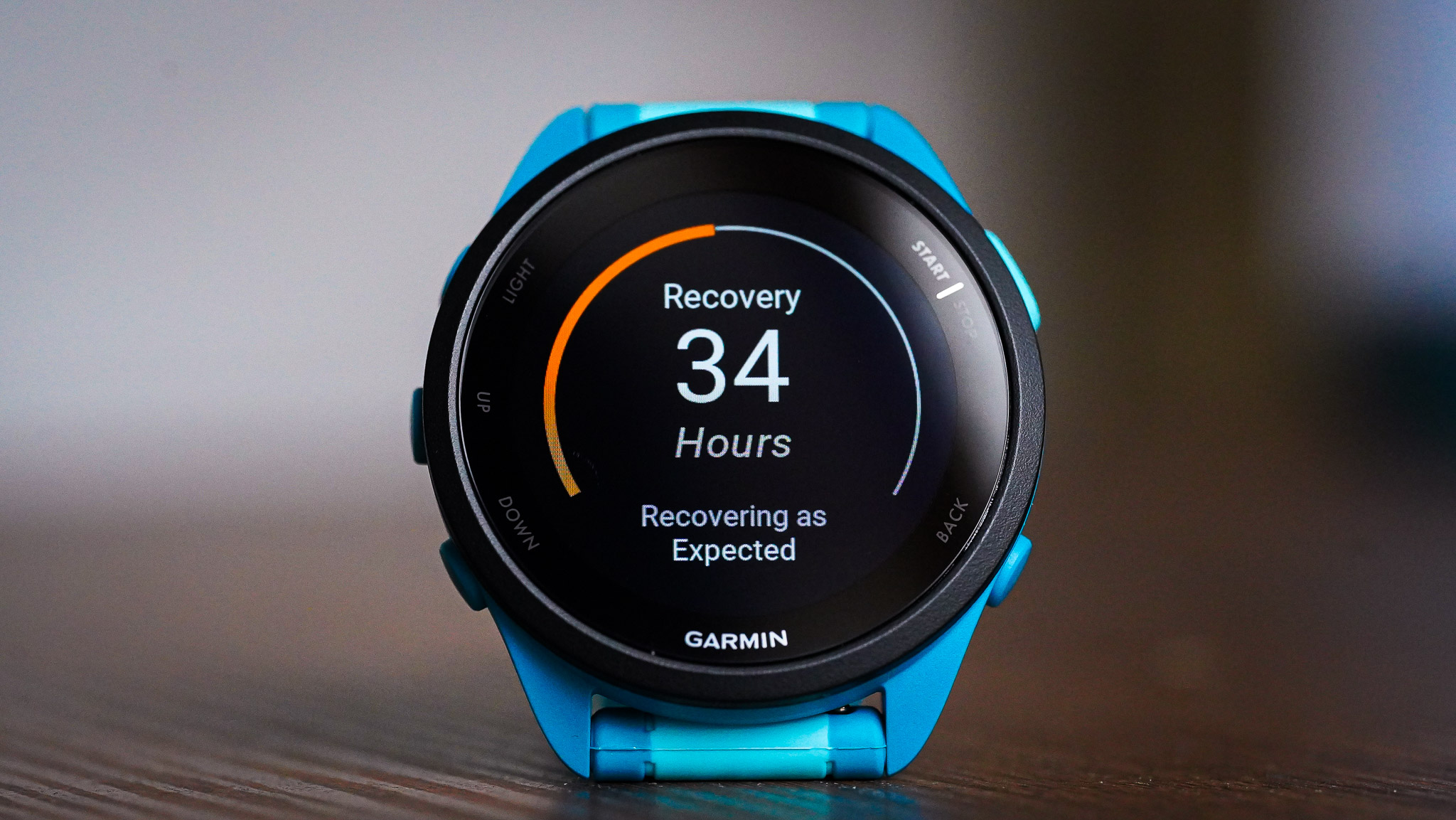
Other things, such as the recovery time calculator, are more problematic – if not impossible – to quantify and double-check. After all, it's all made up based on health data gathered by Garmin users filtered through an algorithm.
The same goes for VO2 max; however, it looked very similar on both the Forerunner 165 and the Forerunner 965 (52 mL/kg/min and 54 mL/kg/min, respectively). Considering the watch only had a few runs to calculate this, I would say it's not too shabby.
Battery life
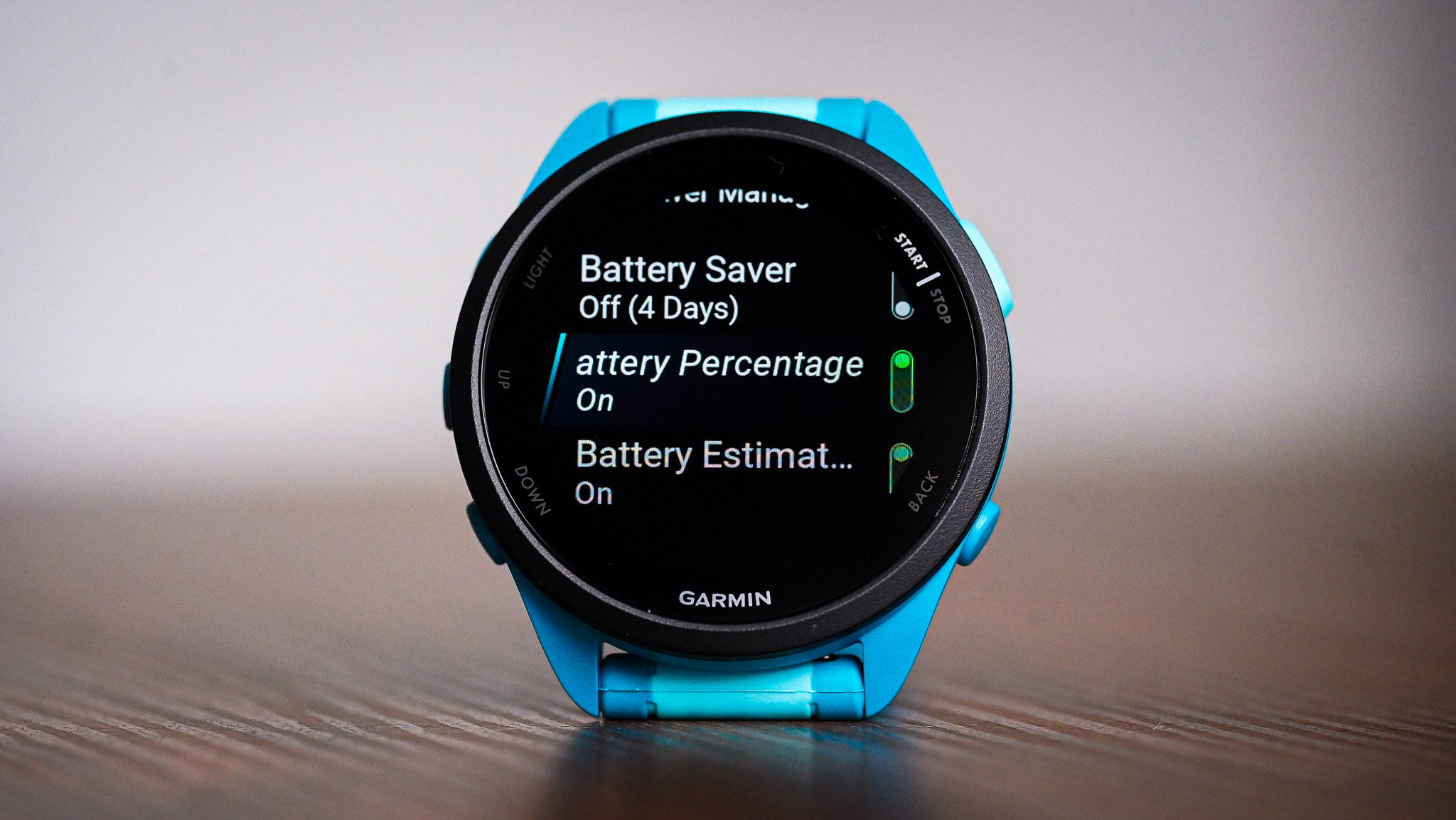
Despite the AMOLED screen, the Garmin Forerunner 165 can function for up to 11 days in smartwatch mode (GPS turned off) on a single charge. The always-on display mode is turned by default, and brightness is only up to 2/3 of the maximum lumen output. Both of these can be changed in the settings.
GPS battery life is up to 19 hours, which is decent for a watch at this price point. One advantage of the single-band GPS is that you don't get 5,000 different battery life estimations.
That said, there are ways to extend battery life during activities. One is turning off the always-on display, which is active by default during exercise. There are also different GPS modes; the Forerunner 165 is set to 'All Systems' by default.
However, you can choose GPS Only or UltraTrac modes, both of which improve GPS battery life during outdoor exercise. Needless to say, if you live in an area where the GPS signal is a bit spotty, you're better off using the All Systems option.
Verdict
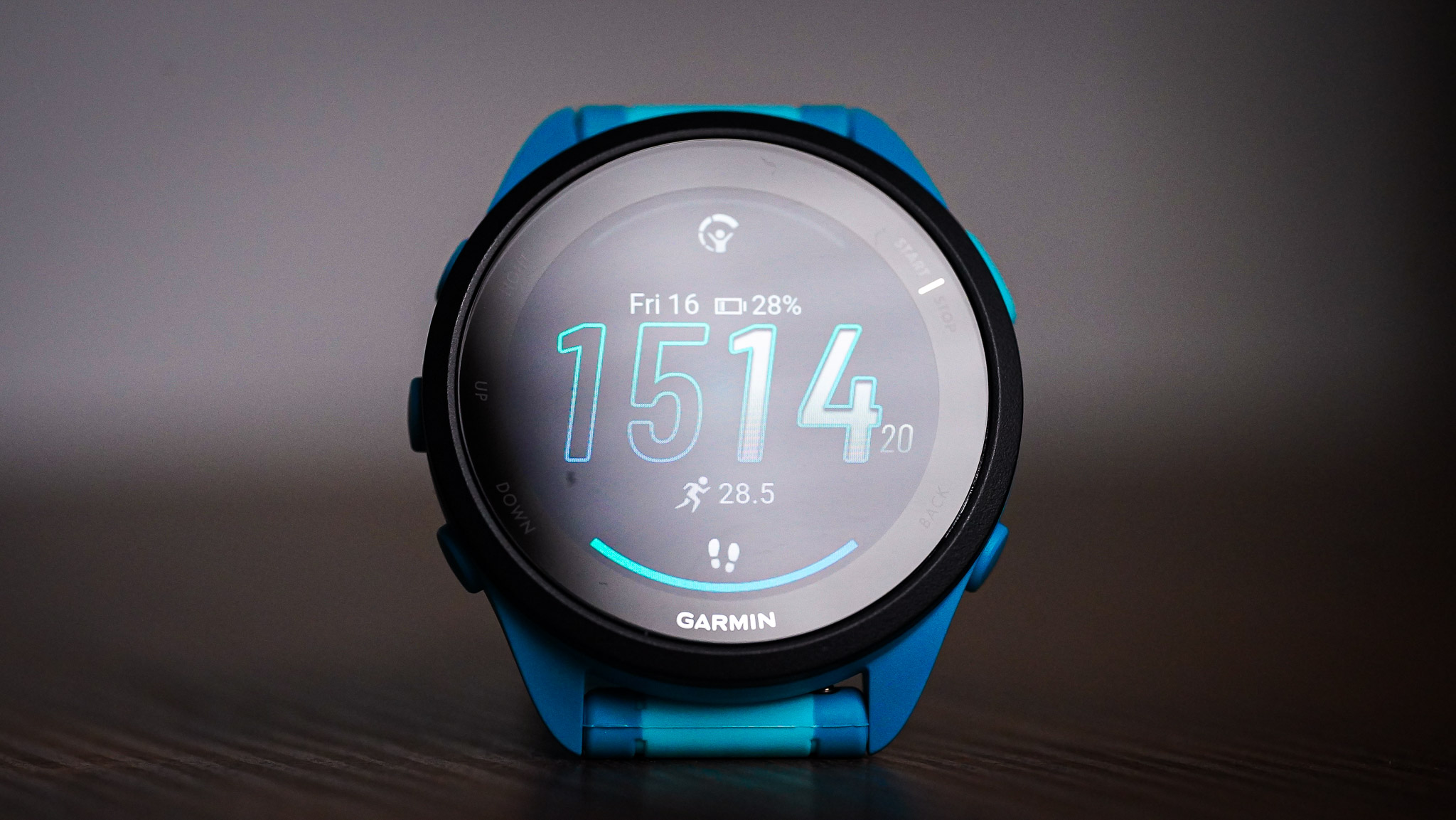
The Garmin Forerunner 165 is a competent running watch. Taking everything into account, including features, build, tracking accuracy and price point, I would say it's the most capable dedicated running watch released in the last 12 months, at least.
If you're looking for an affordable wearable to track your running training but don't need all the performance features under the sun, the Forerunner 165 is your best option right now.
Looking at the broader market, there aren't many better options that look and perform as well as this watch. The Coros Pace 3 is slightly cheaper but hasn't got an AMOLED screen, and Polar's Pacer Pro is more expensive and also features a MIP display (it's better at tracking multisport stuff, though).
I'm glad to see Garmin is making an effort to make its wearables more accessible. The most common criticism of Garmin is that it's an elitist brand that caters for number crunchers only.
Thanks to watches like the Forerunner 165 and the soon-to-be-available Garmin Connect app redesign, it's time for more people to join the Garmin tribe. It's worth it.
Also consider
If you aren't in the US, Huawei's Watch GT Runner might be a cheaper alternative to the Garmin Forerunner 165. It has an AMOLED screen and an AI running coach, and it's also pretty light. Huawei's app is a bit clunky, but otherwise, it's more than acceptable for beginners. Read my full Huawei Watch GT Runner review.
I mentioned it just above, but the other watch I would recommend is the Polar Pacer Pro. It was a bit old-school even when it was launched in 2022, let alone now, but it's a super-affordable multisport watch backed by Polar's impeccable training and recovery suggestions. Read my full Polar Pacer Pro review.

Matt Kollat is a journalist and content creator who works for T3.com and its magazine counterpart as an Active Editor. His areas of expertise include wearables, drones, fitness equipment, nutrition and outdoor gear. He joined T3 in 2019. His byline appears in several publications, including Techradar and Fit&Well, and more. Matt also collaborated with other content creators (e.g. Garage Gym Reviews) and judged many awards, such as the European Specialist Sports Nutrition Alliance's ESSNawards. When he isn't working out, running or cycling, you'll find him roaming the countryside and trying out new podcasting and content creation equipment.